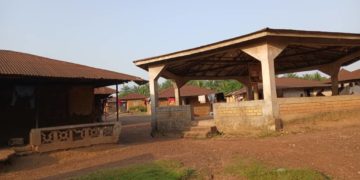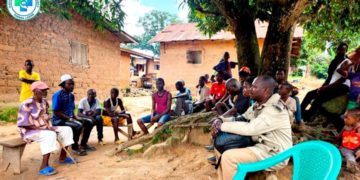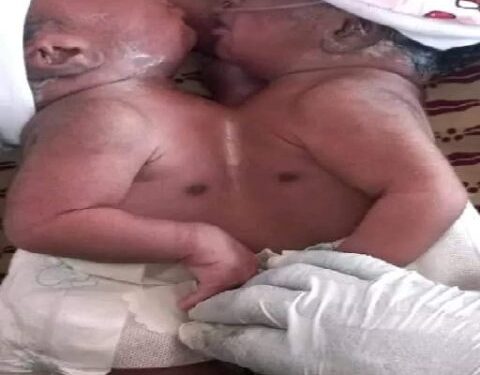A 35 year-old Liberian woman has given birth to conjoined twins.
The woman, identified as Madusu Sheriff, delivered her babies on Saturday, June 11, at the Tellewoyan Hospital in Voinjama in the northern Lofa County of Liberia.
The Liberian government has promised the “best medical care” for the babies who are reported to be joined on their abdomen.
A statement from the Executive Mansion, the Liberian presidential palace, on Sunday said President George Weah had ordered the country’s health minister, Wilhemina Jallah, to facilitate the transportation of the babies and their mother to the capital, Monrovia for examination.
“President Weah wants the Minister of Health and her team to examine them and determine what needs to be done to ensure they and their mother receive the best medical attention possible,” the presidential statement says.
Sources in Monrovia say the babies who are both males are expected to be transferred to the John F. Kennedy Medical Center, Liberia’s foremost health facility, where they are expected to undergo operation for separation.
A local media report quoted the medical director of the Tellewoyan Memorial Hospital, Dr. Wilmot Frank, saying that he had communicated with Dr. Jerry Brown at the JFK hospital who had asked for the kids to be transported to the hospital for the operation.
And this is not the first case of conjoined twins to be born in Liberia.
According to a report by the US broadcaster, ABC, conjoined twins born in Liberia were successfully separated at the Children’s Hospital in Columbus, Ohio in 2000.
Another report by the Canadian Broadcasting Corporation (CBC) indicates that another case occurred in 2008. The babies died aboard a plane as they were being flown to New York in the US for treatment, one month after they were born.
The most recent case happened in 2015, according to a report by the Liberian Inquirer Newspaper, when a set of conjoined twins were born at the Joana Maternity Clinic in South Beach, Monrovia. They died within 24 hours.
Conjoined twins, also referred to as Siamese twins, are two babies born joined together with their bodies physically connected. It is a rare medical phenomenon which poses tough challenge for medical experts the world over.
Reports say only about 5 percent of babies born this way survive. Most die before they are born (stillbirth), or they die shortly after birth.
Not much is known scientifically about the phenomenon. But experts say conjoined twins develop when an early embryo only partially separates to form two individuals. Although two fetuses will develop from this embryo, they remain physically connected.
Conjoined twins are usually connected at the chest, abdomen or pelvis. There have been reports of connection on the head.
Conjoined twins may also share one or more internal organs.
The chances of survival of conjoined twins is usually determined by the organ they share. When they share the same heart, they never survive.
In recent history, advances in technology have improved survival rates, including by separation through surgery.
In Africa, there have been reports of several successful operations on conjoined twins in South Africa, Zimbabwe and Ghana.






















